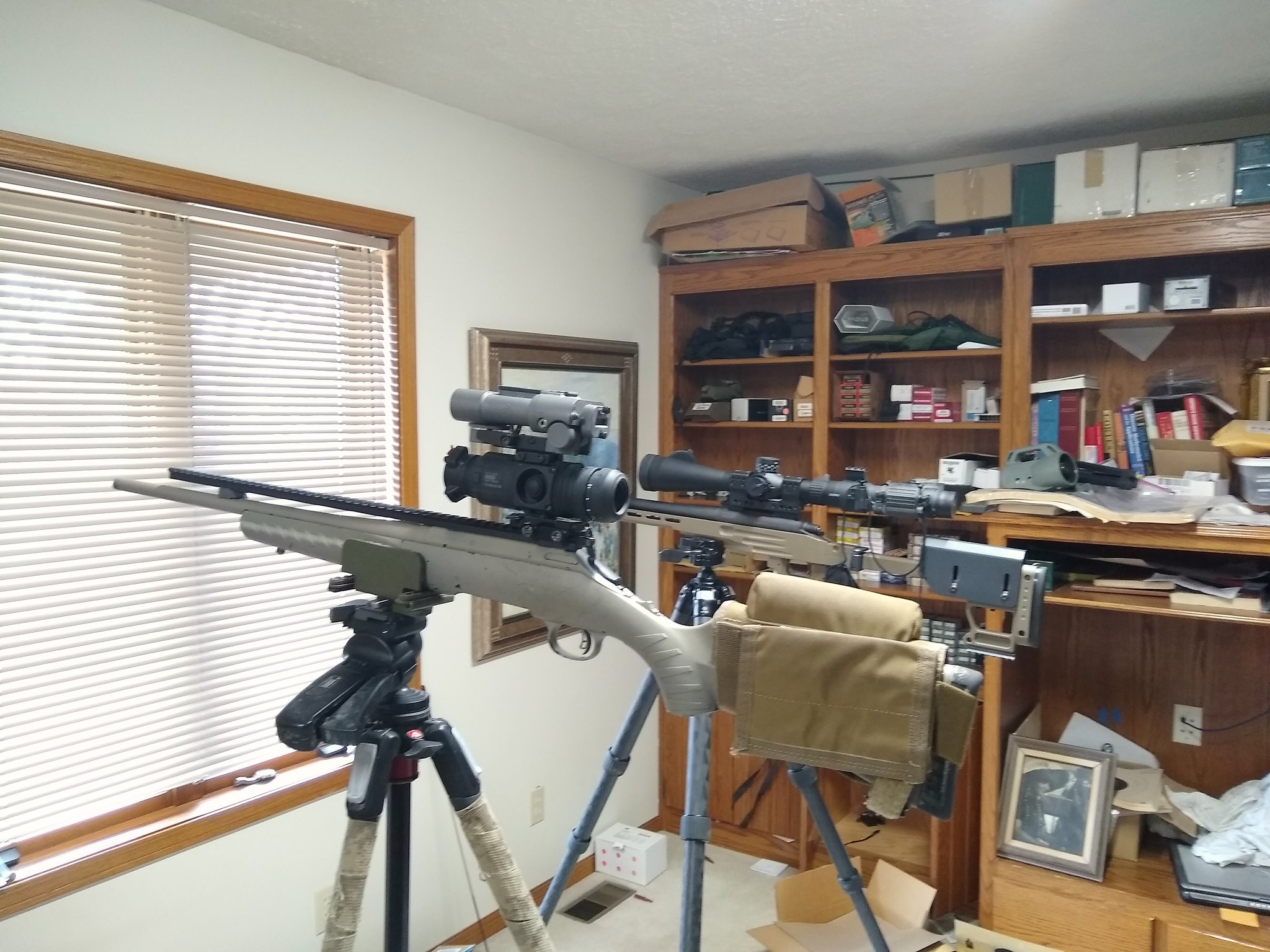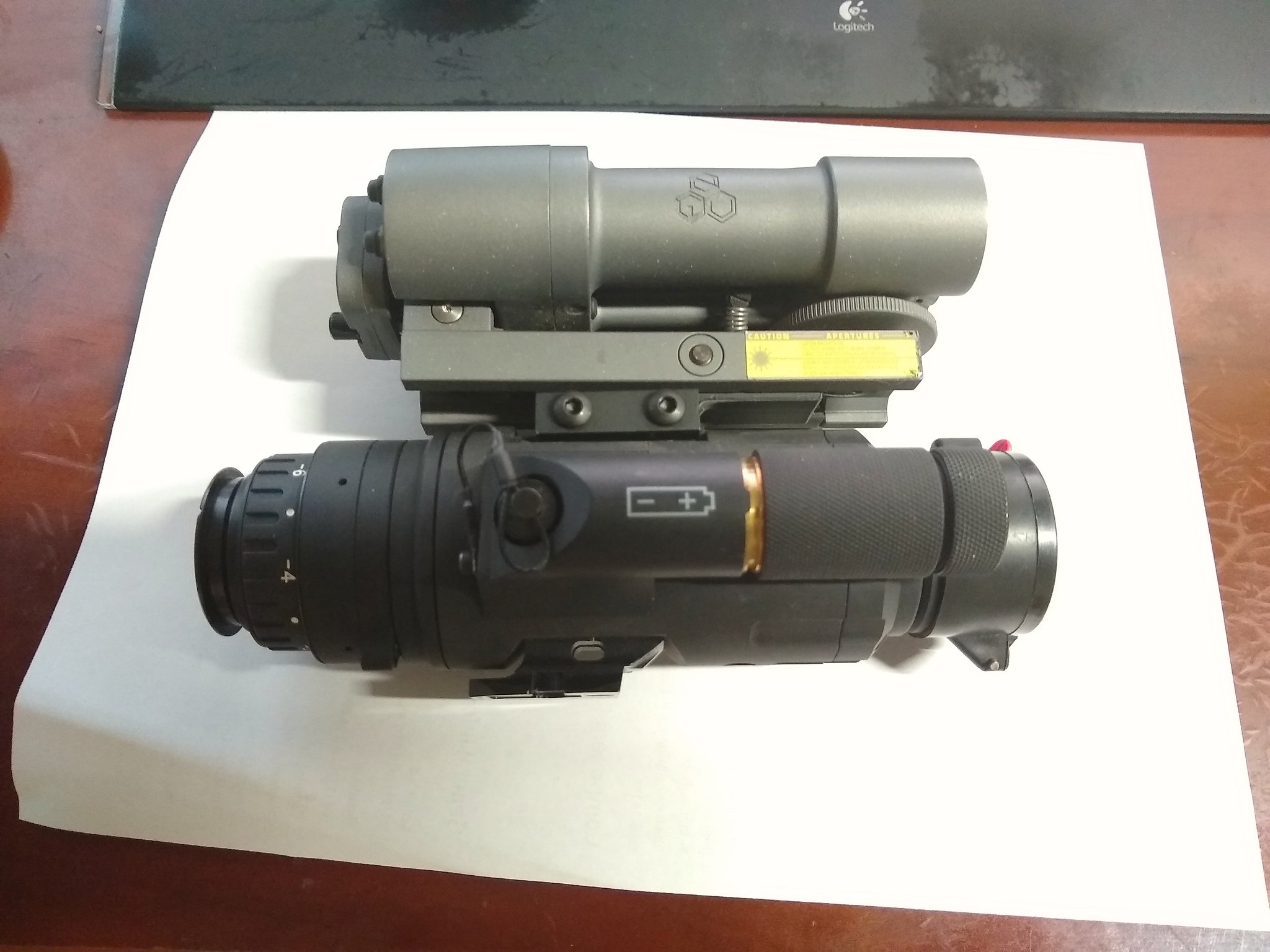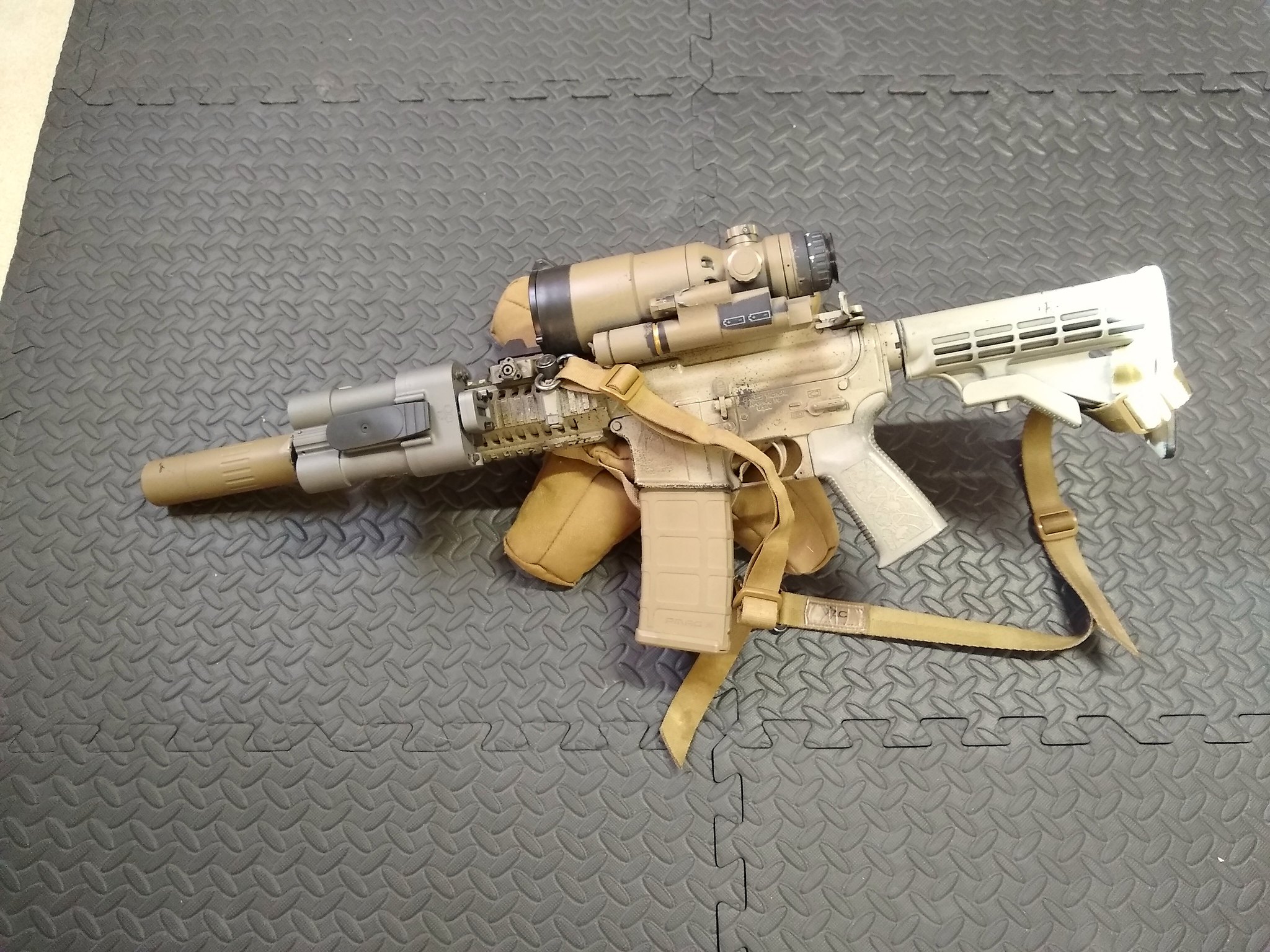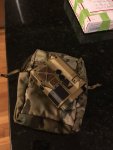Well, in for a penny, in for a pound ... I guess I willl try to zero this critter tonight and build me a working handheld thermal range finder !
The gear will include:

Olde ruger YUTE model .308WIN(18) (my "test" gun) ...
Skeet weapons mount which takes dove tail from the device
Patrol
Lion's gear rail on the patrol
Radius on the Lion's gear rail
Manfrotto M190 tripod
PIG saddle
RRS tripod
G-10 chassis
REM700 SPS tac aac-sd barreled action
Mk5 5-25x T3 scope
Night Optics Day/Night adapter
PVS-14 #1
not shown
TH bump helmet
norotos lo sto (button)
PVS-14 #2
==
Zeroing Process
01 - Setup Ruger Yute model on tripod outside aimed at the mineral feeder ~ 415 yrds away on the ridge
02 - Setup REM700 7.62(20) on tripod just to the right of the ruger yute
03 - Aim reticle of patrol on yute at center of mineral feeder at 415yds.
04 - With PVS-14 on rear of Mk5 scope, aim center of 7.62(20) reticle at the mineral feeder.
05 - Turn on the radius aiming laser.
06 - Adjust the radius aiming laser so it is pointed at the mineral feeder, use helmet mounted 14 to get into the ball park.
07 - Keep checking the Patrol to make sure the center of the thermal reticle is aimed at the center of the mineral feeder.
08 - Fine tune the Radius on the Patrol by checking on the 7.62(20) with the 14 behind.
09 - Once the Radius on the Patrol is zeroed, test several known distance targets. Aim the patrol thermal reticle at the target and check the range. Repeat steps 07, 08 and 09 if needed
The gear will include:

Olde ruger YUTE model .308WIN(18) (my "test" gun) ...
Skeet weapons mount which takes dove tail from the device
Patrol
Lion's gear rail on the patrol
Radius on the Lion's gear rail
Manfrotto M190 tripod
PIG saddle
RRS tripod
G-10 chassis
REM700 SPS tac aac-sd barreled action
Mk5 5-25x T3 scope
Night Optics Day/Night adapter
PVS-14 #1
not shown
TH bump helmet
norotos lo sto (button)
PVS-14 #2
==
Zeroing Process
01 - Setup Ruger Yute model on tripod outside aimed at the mineral feeder ~ 415 yrds away on the ridge
02 - Setup REM700 7.62(20) on tripod just to the right of the ruger yute
03 - Aim reticle of patrol on yute at center of mineral feeder at 415yds.
04 - With PVS-14 on rear of Mk5 scope, aim center of 7.62(20) reticle at the mineral feeder.
05 - Turn on the radius aiming laser.
06 - Adjust the radius aiming laser so it is pointed at the mineral feeder, use helmet mounted 14 to get into the ball park.
07 - Keep checking the Patrol to make sure the center of the thermal reticle is aimed at the center of the mineral feeder.
08 - Fine tune the Radius on the Patrol by checking on the 7.62(20) with the 14 behind.
09 - Once the Radius on the Patrol is zeroed, test several known distance targets. Aim the patrol thermal reticle at the target and check the range. Repeat steps 07, 08 and 09 if needed
Last edited:














